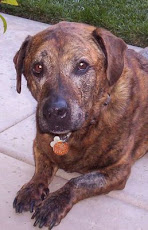Dogs' powerful noses have 300 million
sensors, compared with a human's measly 5 million. In addition, dogs
have a second smelling device in the backs of their noses that we don't
have, called Jacobson's organ.
That double smelling system allows trained dogs to detect cancer's unique odors, called volatile organic compounds.
It
took humans thousands of years to figure this out. In 1989, doctors at
King's College Hospital in London wrote in The Lancet about a woman
whose dog persisted in smelling a particular mole on her leg. That mole
turned out to be early-stage malignant melanoma.
Over
the next 26 years, studies from France to California to Italy have
concluded that dogs really can detect the smell of cancer
Before the use of dogs to detect cancer became recognized as a reality, untrained family pets were exhibiting strange behavior in family members who did not know they had cancer. One dog kept smelling a mole on a woman's leg, which when tested, was cancerous. Another dog kept jumping on a woman's breast, and sniffing. It turned out she had breast cancer. There were so many of these instances that researchers determined that dogs could detect cancer. Any kind of cancer can be detected by a dog. In addition, dogs can predict seizures in people.
What a great use for dogs in medicine. Many pound dogs that have no future could trained to detect cancer in humans. There's a new series on PBS, narrated by the star of Doc Martin, about dogs. This, and many other interesting facts are discussed in the series. I have yet to see it, but will look for it, as it sounds very interesting. Man's best friend is much more than just a companion. Now we know they can help detect medical disease.


No comments:
Post a Comment